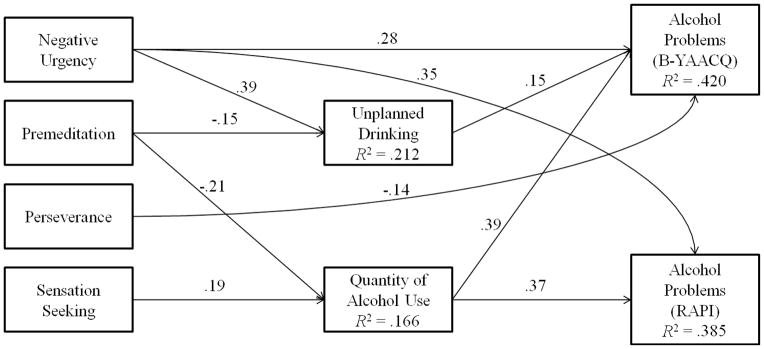Figure 2.

Depicts the observed relationships between impulsivity-like traits, alcohol use, unplanned drinking, and alcohol-related problems. Only significant effects are shown at p < .05. Coefficients are standardized regression coefficients from a path analysis estimated using the bias-corrected bootstrap of 5000 samples. Gender was modeled as a covariate (i.e., predicted all variables); the correlations between impulsivity-like traits, the correlation between the disturbances for unplanned drinking and quantity of alcohol use, and the correlation between the disturbances between B-YAACQ and RAPI were also estimated, but not shown for reasons of parsimony (unplanned drinking with quantity of alcohol use, r = .20; B-YAACQ with RAPI, r = .63)
